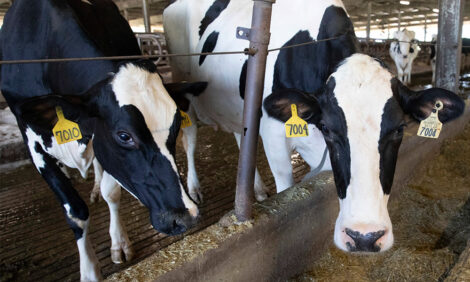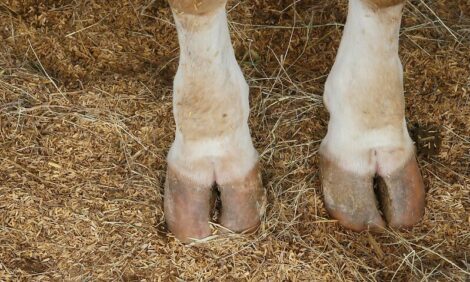



Fluke in Cattle Costs Producers Millions
UK - The number of cases of liver fluke in cattle sent for slaughter continues to rise, according to figures released by the Food Standards Agency. Over a fifth of all cattle in Great Britain (GB) sent to slaughterhouses during 2010 had their livers condemned as a result of damage caused by liver fluke1.While the overall figure for GB in 2009 was 20.6%, this figure rose to 21.7% in 2010. All three countries included in the figures rose by a small amount: England by 1.41% (from 17.97% in 2009 to 19.38% in 2010), Scotland by 0.2% (from 26.85% to 27.05%) and Wales by 2.29% (from 25.42% to 27.71%).
While this figure represents a considerable loss to the meat trade, it is beef producers who will be the biggest losers. Dr Phil Hadley, Senior Regional Manager with EBLEX, says: “We estimate that the loss to the meat trade as a result of these livers being excluded from the food chain is around £2 million per year.
“Although substantial, this is dwarfed by the estimated £25 to £30 farm cost for each case of liver fluke, attributed to slower growth rates, lower feed conversion efficiencies and greater mortalities. Therefore, fluke could be costing beef farmers in Great Britain £14 million a year, or as much as £16 million right across the supply chain.”
Fiona MacGillivray, Merial’s Veterinary Adviser, said: “This is a worrying trend at a time when the industry can ill-afford the cost of additional finishing time that fluke infection can cause.”
Latest figures from the Veterinary Investigation Diagnosis Analysis (GB) database also show an upward trend in cases of liver fluke, with the number of reported cases rising from 508 in 2001 to 1451 in 20092.
Fiona continues: “The generally wetter, milder weather experienced in recent years has resulted in ideal conditions for liver fluke to breed throughout the year. In addition to a rise in the number of cases, areas of the country that were previously considered fluke-free have been recording cases. Furthermore, this has led to the fluke season becoming extended, such that fluke is no longer just an autumn and winter problem but is becoming a spring and summer one too.”
Whilst many farmers treat their cattle for fluke at housing, few are aware of the benefits of administering a dose whilst cattle are at grass.
Research shows that even mild fluke infections can reduce the growth rate of cattle by nine% and feed intake by as much as 11% when compared with cattle that have been treated against fluke3. Furthermore, animals treated at grass for fluke and worms have shown a 31% increase in weight gain over untreated animals and an eight% increase over those that were just treated for worms4.
In terms of treatment at grass, farmers have the option to choose a straight fluke product such as Trodax®, which can be given alongside an existing wormer treatment, or alternatively a combination endectocide such as Ivomec® Super can be used. Not only does Ivomec® Super control fluke, it also has the advantage of providing persistent protection against roundworms so, in effect, can be used to replace an existing worm treatment in a strategic control programme.
References: 1. Figures supplied by the Food Standards Agency 2 Veterinary Investigation Diagnosis Analysis database . 3 Hope Cawdery et al, 1977. 4 Loyacano et al. Veterinary Parasitology 107, 2002.
TheCattleSite News Desk


